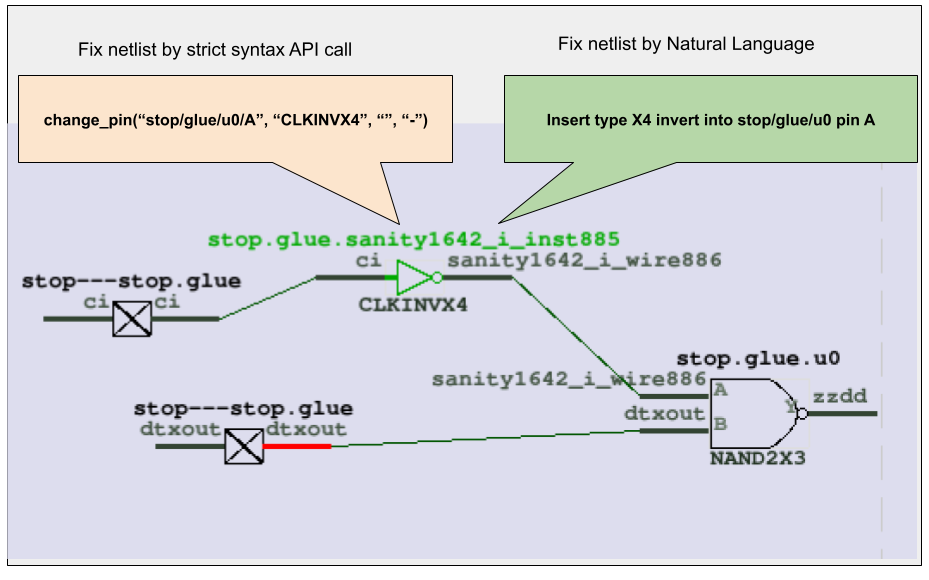In the intricate world of Electronic Design Automation (EDA), engineers often face a steep learning curve when mastering complex tools. Remembering every API, its precise syntax, and the nuances of various options can be a significant hurdle, even for experienced users returning after a break. This frequently leads to repetitive consultations of user manuals, diverting valuable time from core design tasks.
The advent of cost-effective Large Language Models (LLMs) has opened a new paradigm: enabling users to interact with EDA tools using plain, natural language. This revolutionary approach allows engineers to simply describe their desired modifications, and the tool intelligently translates these instructions into executable commands.
GOF ECO leverages this capability to introduce AI-Powered Natural Language ECO operations. As illustrated in Figure 1, users can now choose between the traditional, strict API syntax or a more intuitive natural language approach to perform complex netlist modifications, such as inserting a specific inverter type to alter a pin's logic.

Figure 1: Using Natural Language to Modify Netlist Logic
Traditionally, implementing a change like inserting an X4 inverter into a specific pin requires adherence to a precise API syntax. This often involves a detailed review of the user manual to locate the correct command and consulting the library file to identify the exact component name (e.g., 'CLKINVX4').
The Conventional API Call Method:
With the LLM-driven approach, users can bypass manual searches and directly articulate their intent:
At its core, the AI-powered Natural Language ECO in GOF operates through a sophisticated translation layer. When a user inputs a natural language command, the LLM processes it to:
Parse Intent: The LLM identifies the user's primary goal (e.g., 'insert gate', 'change pin', 'connect net').
Extract Parameters: It then extracts all relevant parameters from the natural language (e.g., instance name, pin name, gate type, connection details, cell strength).
Map to Internal APIs: These extracted parameters are mapped to GOF's robust set of internal Perl APIs (like new_gate, change_pin, get_net_of, etc.). The system is designed to handle the complexities of argument formatting, such as automatically determining when a '-' is needed for change_pin based on the context.
Generate Executable Script: The LLM generates a sequence of precise API calls that GOF can execute directly. This ensures that the underlying operations are always valid and adhere to the tool's capabilities.
Enhanced Accessibility: Lowers the barrier to entry for new engineers and makes the tool more approachable for occasional users, reducing the need for extensive API memorization.
Increased Efficiency: Accelerates the ECO process by eliminating manual lookup of commands and syntax, allowing engineers to focus on design intent rather than scripting mechanics. Faster prototyping and iteration cycles are a direct result.
Reduced Errors: The AI's ability to interpret context and generate syntactically correct API calls minimizes common human errors, leading to more reliable ECO patches.
Intuitive Interaction: Transforms the command-line interface into a conversational problem-solving environment, making debugging and modifications more natural.
Robust Debugging: Since the natural language input is translated into detailed, standard API calls, the debugging process remains as robust and transparent as with manually written scripts. The GOF Debug GUI interface further streamlines visual debugging, making it highly convenient to inspect changes.
Example script for Natural Language ECO operations: